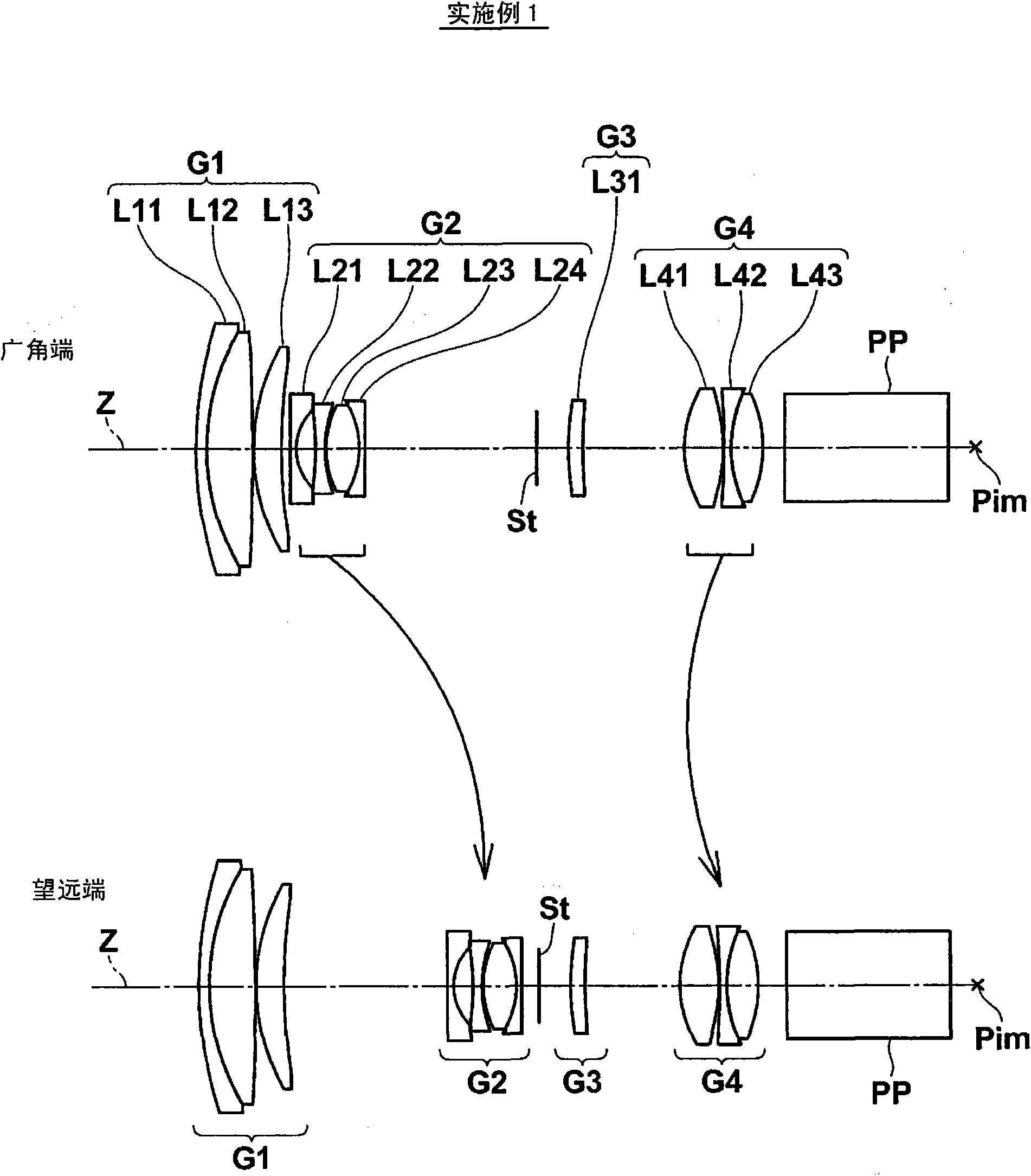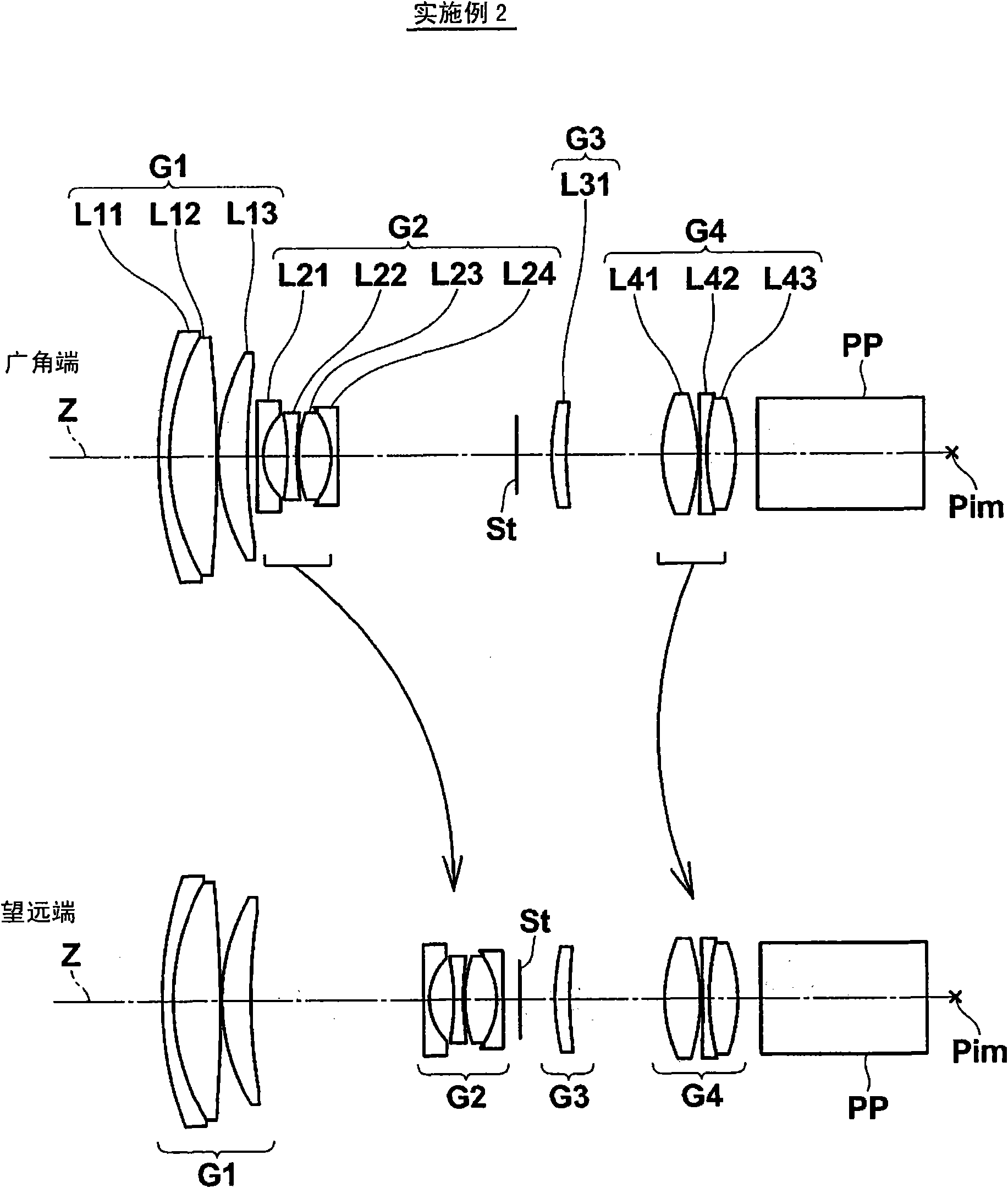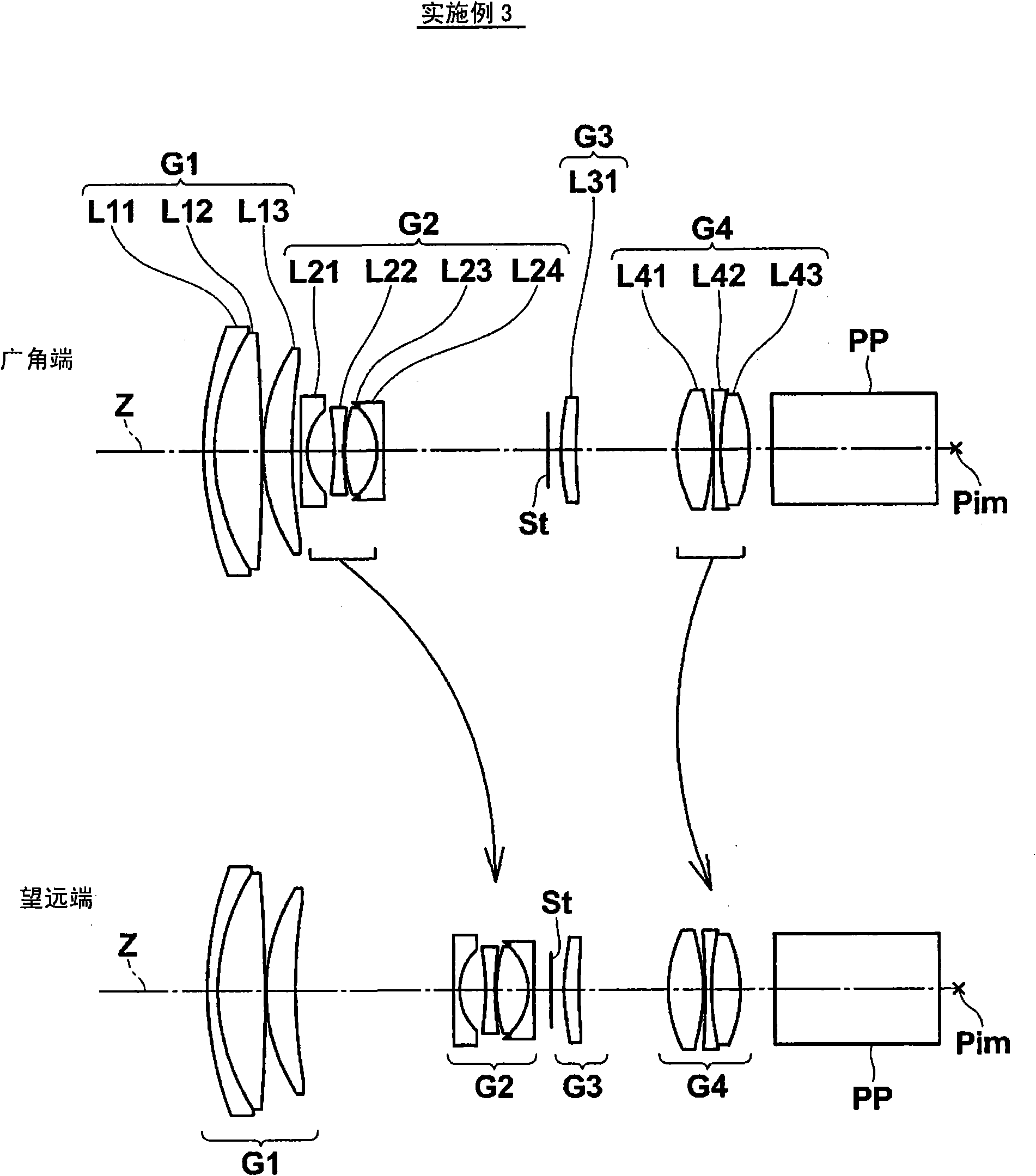Zoom lens and camera device
A zoom lens and lens technology, applied in image communication, television, optics, etc., can solve the problems of insufficient miniaturization of the lens system, large movement of the second lens group, and easy to increase the diameter of the front lens, etc. Effects of miniaturization, shortening, and increase in manufacturing errors
- Summary
- Abstract
- Description
- Claims
- Application Information
AI Technical Summary
Problems solved by technology
Method used
Image
Examples
Embodiment
[0119] Next, specific numerical examples of the zoom lens of the present invention will be described. exist figure 1 A lens sectional view of the zoom lens of Example 1 is shown. exist Figure 2 to Figure 8 Each lens sectional view of the zoom lens of Examples 2-8 is shown, respectively. Figure 2 to Figure 8 The graphical method and figure 1 same.
[0120] Table 1 shows the basic lens data of the zoom lens according to Example 1, Table 2 shows the data related to zooming (magnification), and Table 3 shows the aspheric surface data. Similarly, Tables 4 to 24 show basic data, data related to zooming, and aspheric surface data of the zoom lenses according to Examples 2 to 8. Hereinafter, the meanings of the symbols in the tables will be described taking Example 1 as an example, but the same applies to Examples 2 to 8.
[0121] In the basic lens data in Table 1, Si represents the i-th (i=1, 2, 3, . Number, Ri indicates the radius of curvature of the i-th surface, and Di in...
PUM
 Login to View More
Login to View More Abstract
Description
Claims
Application Information
 Login to View More
Login to View More - R&D
- Intellectual Property
- Life Sciences
- Materials
- Tech Scout
- Unparalleled Data Quality
- Higher Quality Content
- 60% Fewer Hallucinations
Browse by: Latest US Patents, China's latest patents, Technical Efficacy Thesaurus, Application Domain, Technology Topic, Popular Technical Reports.
© 2025 PatSnap. All rights reserved.Legal|Privacy policy|Modern Slavery Act Transparency Statement|Sitemap|About US| Contact US: help@patsnap.com



